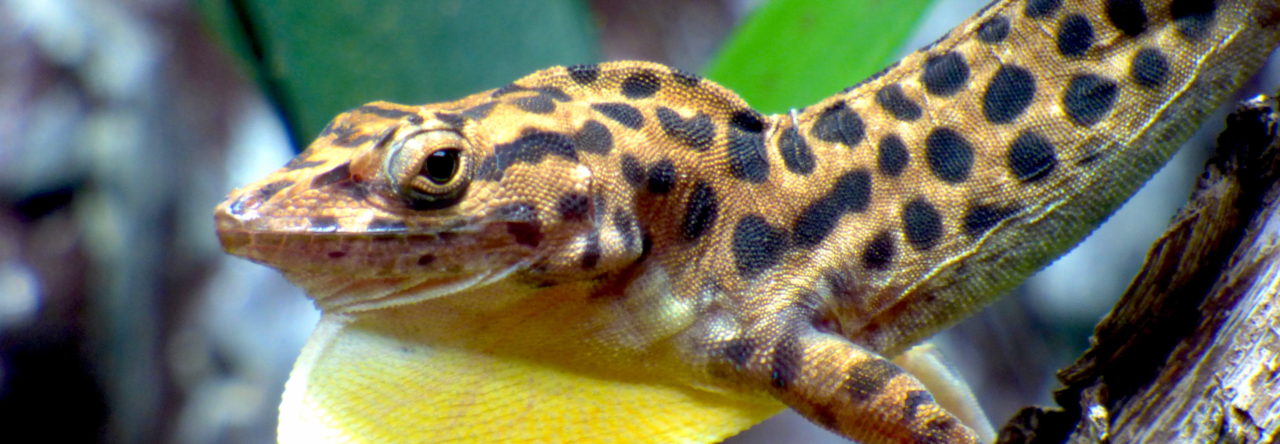There was a lot of discussion last month about the fabulous anole goings-on at the SICB meetings. However, there were other conferences sporting important anole work over the holidays. One of them was International Plant and Animal Genome XXII, described as “the largest AG-genomics meeting in the world” and held in San Diego in early January. Perhaps not a venue at which you’d expect anole work to be discussed, but there was Poster #720:
Mining the Most Species-Rich Amniote Genus: de novo Sequencing of Three Anole Lizards for Comparative Genomic Analysis #P720
Date: Monday, January 13
10:00 am – 11:30 am
Description:
Presenters: Marc Tollis Arizona State University, Elizabeth D. Hutchins Arizona State University, Walter L. Eckalbar Arizona State University, Michael R. Crusoe Arizona State University, Catherine M. May Arizona State University, Jessica Stapley Smithsonian Tropical Research Institute, Elise Kulik Arizona State University, Matt J. Huentelman Translational Genomics Research Institute, Rebecca E. Fisher University of Arizona, Kenro Kusumi Arizona State University
P720 – Mining the Most Species-Rich Amniote Genus: de novo Sequencing of Three Anole Lizards for Comparative Genomic Analysis
The repeated evolution of morphological adaptations to specific ecological niches makes Anolis lizards a spectacular example of adaptive radiation in vertebrates, and an ideal model for comparative genomics. The complete genome of the green anole (A. carolinensis) has already provided insights to the evolution of genomic and phenotypic variation in vertebrates. A multi-species comparison within the Anolis genus would increase the power of studies seeking to understand the genomic bases of species diversification. We carried out de novo whole genome sequencing and draft assembly of three species, the grass anole (A. auratus), the bridled anole (A. frenatus), and the slender anole (A. apletophallus). Here we report some of our preliminary comparative genomic findings. Analysis of the abundance and diversity of transposable elements within these genomes has revealed repetitive landscapes typical of non-mammalian vertebrates, yet variation between Anolis species is greater than what is observed across most mammals. This may have provided a genomic environment amenable to key adaptations during the Anolis radiation. Using well-defined models such as mouse and chicken, we identified orthologous genes integral to myogenesis and limb development, and are beginning to catalogue interspecific variation in protein-coding genes and cis-regulatory motifs. Functional anatomical and histological studies are being performed to quantify the tail and hindlimb muscle groups of these species compared to A. carolinensis. Our ultimate goal is to identify the divergent alleles associated with ecological speciation, thus bridging the genotype-phenotype gap.
- Evolution in Real Time on Lizard Island - March 23, 2025
- Spider Snags Adult Anolis osa - March 22, 2025
- An Homage to the Green Anoles of New Orleans - March 21, 2025


Kevin de Queiroz
Cool about the three new anole genomes. However, we really need get away from notions such as the most species-rich amniote genus, which have no biological significance. Is it surprising that variation in the abundance and diversity of transposable elements between Anolis species is greater than that observed across most mammals? Perhaps it seems to be if we focus on genera (variation within a lizard genus is greater than that between mammalian genera), but it would be more meaningful to address the issue from the perspective of divergence times.
Marc Tollis
Thanks for the shout-out! While billed as a primarily Ag-genomics conference, the NGS genomics revolution (DNA, RNA, RAD-tag, SNPs etc) has allowed this conference to include many non-model species that are being sequenced by smaller labs who are interested in more evolutionary and ecological questions. There were also helpful workshops and technical talks, and the strong presences of government and industry ensures that the most cutting edge technologies and methods are being represented. We found it very exciting and enlightening. And I ran into more than a few folks you’d normally expect at Evolution or SMBE. This is a good conference that should be on the radar of labs doing any genomic work.